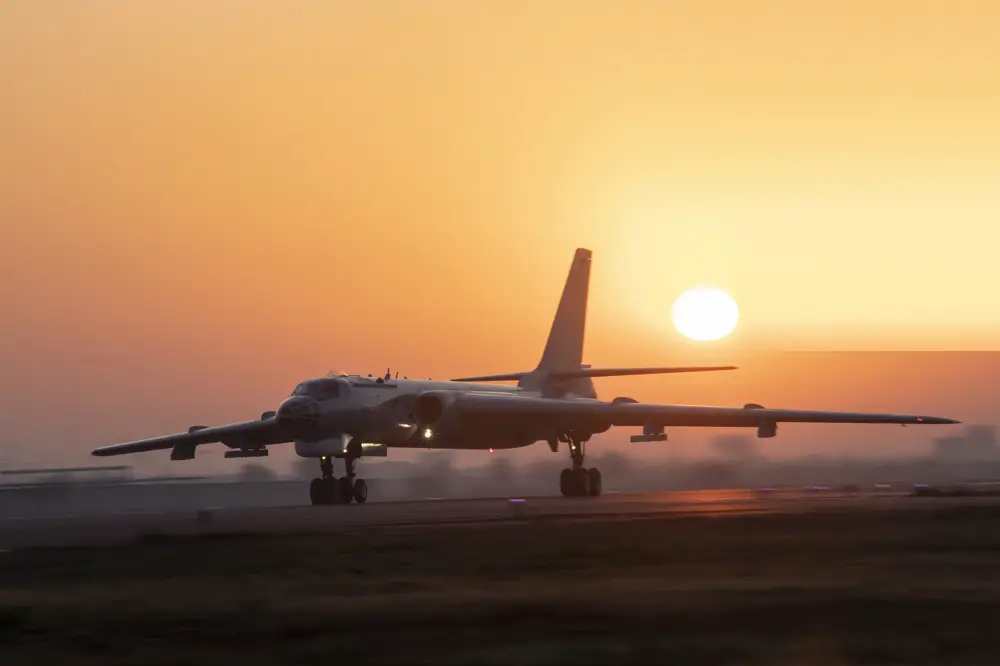The China’s Ministry of National Defense announced on Thursday that new aircrafts affiliated with the People’s Liberation Army (PLA) Navy, including Xian H-6G and H-6J bombers, recently conducted intensive round-the-clock drills in the South China Sea. The drills were a routine arrangement in the annual schedule and contributed to the pilots’ technique and tactical ability, as well as the troops’ all-weather combat capabilities. During the drills, the warplanes under the PLA Southern Theater Command Navy Aviation Force successfully completed training exercises including takeoff and landing in daytime and nighttime, long-distance strike and attacks on surface targets
The drill subjects are very combat-oriented, and showed that the H-6J, which made its first public appearance, already has the capability to conduct all-weather combat missions and is also capable of accurately attacking moving maritime targets. The China’s Ministry of National Defense introduced the H-6 bombers’ exercises in detail and demonstrated China’s capabilities in safeguarding its national sovereignty and rights. The recent PLA warplanes’ exercises in the South China Sea came at a time when the US military has been stirring up trouble in the region with dual aircraft carrier exercises and frequent close-up reconnaissance with large reconnaissance aircraft on South China’s coastal regions from the South China Sea.
The Xian H-6 (HÅng-6) is a licence-built version of the Soviet Tupolev Tu-16 twin-engine jet bomber, built for China’s People’s Liberation Army Air Force (PLAAF) and Navy (PLAN). Delivery of the Tu-16 to China began in 1958, and the Xi’an Aircraft Industrial Corporation (XAC) signed a licence production agreement with the USSR to build the type in the late 1950s. The first Chinese Tu-16, or “H-6” as it was designated in Chinese service, flew in 1959. Production was performed by the plant at Xian, with at least 150 built into the 1990s. China is estimated to currently operate around 120 of the aircraft. According to United States DOD, this will give the PLAAF a long-range standoff offensive air capability with precision-guided munitions.
Xian H-6J is a version of H-6K for use by the People’s Liberation Army Navy Air Force (PLANAF) to replace the H-6G; has greater payload and range with performance similar to H-6K. The Chinese media reported that four H-6Js were first spotted in a PLA Naval base in South China’s Guangxi Zhuang Autonomous Region in September 2018. It said that the H-6J can carry seven YJ-12 supersonic anti-ship cruise missiles, with six under the wings and one in the weapon bay. The H-6J’s weapon capacity is about twice that of the H-6G, with 50 percent farther combat radius to about 3,500 kilometers. It also showed that China’s different variants in the H-6 series bombers have achieved all-weather combat capabilities.
















